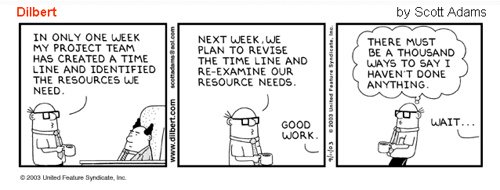I think we’ve figured out why, in the face of compelling evidence to the contrary, plaintiff attorneys in California continue to argue the work comp system mis-serves a large number of workers’ comp patients.
Before we delve into this, allow me to stipulate that many applicant attorneys are likely well-intentioned, seeking to do good, and may well believe that a lot of work comp patients are ill-served by the work comp system. Since they only talk with work comp patients that have complaints, that would not be surprising. And, a relatively few work comp patients are, indeed, ill-served by the system for a variety of reasons – a bad employer and/or boss, crappy doctor, under-trained and/or over-worked claims adjuster – even a lousy attorney.
That said, it appears their representative organization, the California Applicant Attorneys’ Association, is not conversant with research methodology, processes, or statistics – and that’s why they don’t understand that the work comp system is working pretty well.
I draw this conclusion after reading an article entitled “Calling all Applicants: The Injured Worker Survey” from a July 2016 CAAA publication. In the piece, author Richard Meechan argues:
“Nothing makes sense – up is down and they (the Committee on Health and Safety and Workers’ Compensation, or CHSWC) have graphs and charts to prove it.”
The “Injured Worker Survey” Mr Meechan refers to will apparently enable the CAAA to:
“see how the system is working for the most seriously injured workers. That would be workers that were out of work for more than a year, our clients, to be more exact.”
This is because the CAAA apparently doesn’t (want to) believe the myriad research studies published by research organizations about injured worker outcomes and related matters.
If you, dear reader, are puzzled by this, allow me to explain. Careful and valid data analysis by experts examining credible data sets can be, and often is, translated into “graphs and charts” to help the non-statistically-endowed understand what is really going on.
In the article, Meechan states he is skeptical of research finding “95 percent of medical requests were approved and that injured workers were satisfied with their medical treatment.” That skepticism resulted in the CAAA’s enlistment of three attorneys to help the CAAA committee on Health and Safety figure out how to “respond” to these “tales” (referring to the research presented at CHSWC meetings).
While I could find no evidence that any of the enlistees have an educational or experiential background in statistics, statistical analysis, business analysis, the physical sciences, or operations management (heavy in analytics), one of the three did study economics back in the nineteen-sixties. This isn’t to denigrate the trio, rather to contrast their relatively modest scientific research and statistical analysis credentials with those of folks who actually do research. Like CWCI. And WCRI. And RAND.
Using SurveyMonkey, the CAAA is conducting their “survey” and will likely publish “results” in an attempt to show the information presented at CHSWC meetings, based on reams of research published after hundreds of hours invested in very sophisticated analytical processes employing highly-refined datasets and tested methodologies vetted by actual, real, live, statisticians with decades of experience and darned impressive credentials in data analysis and everything that goes into it is, well, wrong.
And CAAA will do this based on responses from an on-line, open access survey with no data validation or proof that you are actually an “Injured Worker” needed.
Hey, you can try it yourself, here.
So here’s where the problem lies.
In the article, Mr Meechan notes that fewer than one percent (33) of the 3700+ survey responses asserted they had been out of work for a year or more. Apparently that is concerning. Mr Meechan asks others to help get the word out, as “one hundred responses is the gold standard for surveys and we are short.”
That single statement demonstrates a complete lack of of even a basic understanding of statistics. Mr Meechan is apparently confusing statistical validity with an arbitrary “gold standard”. Further, there’s an assumption that all that is needed is 100 SurveyMonkey responses from respondents who claim to have been injured and out of work for more than a year, and he and his associates will have what they need to refute all that science stuff CHSWC throws up there on the screen.
As anyone who has one day of stats knows, without valid underlying data to start with, the whole exercise is pointless.
More directly, garbage in, garbage out.
And in this case, the underlying data is, indeed, meaningless. A gazillion monkeys could be typing away and deliver lots of “results”. Some whizkid could figure out how to program a bot to fill them out with no human intervention at all. More prosaically, a bunch of law clerks could earn some extra hours banging away on laptops or iPads completing SurveyMonkey surveys.
In this instance it is indeed possible that some or most of the respondents at some point had an encounter with the work comp system. Or not.
I belabor this point not to embarrass the attorneys, for that is NOT my intent. Rather it is to point out an obvious conclusion:
As reform opponents think that a SurveyMonkey random survey will be more valid than real research studies conducted by experts, we now know why “nothing makes sense” to them.
They don’t have a clue.
They are totally, fundamentally, and blindingly ignorant of even the most rudimentary statistical terms and concepts.
Note – I don’t have a link to the original article. sorry – ask CAAA for your copy.




